Setting Up a 20 Gallon Reef Tank
As we all know, there are many different types of fish tanks. Among the wide range, there is one type of fish tank that deserves attention – the coral reef tank. A coral reef tank is a rather special type of fish tank completely different from other common tanks, it is a classic form of the saltwater fish tank. However, most people may be new to a reef aquarium, so they will not feel nervous, worried, and afraid of such a new and unfamiliar field. Indeed, how can a newbie build a 20-gallon reef tank? Well, let’s find an ideal answer for you who have been struggling with this article today.
Content Table
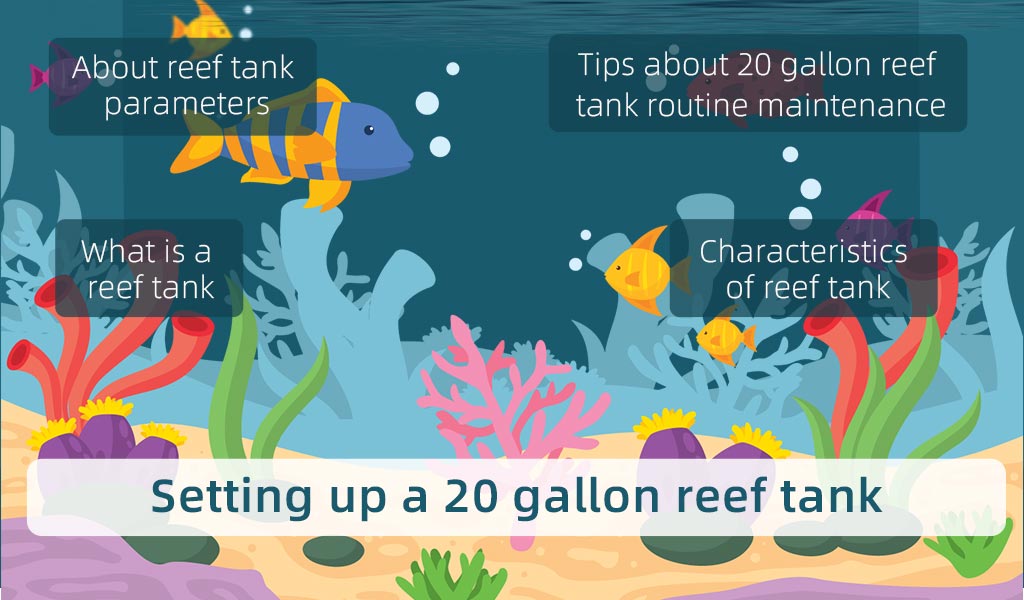
What is a reef tank
You may be wondering, “What is a reef tank?” and if so, what are its characteristics? If you’ve been thinking about a saltwater tank, here are some characteristics of a reef tank. These tanks are made up of several different types of marine life, so it’s essential to know what you’re getting before you start assembling one. If you’re wondering how to set up a reef tank, read on.
Important things in a reef tank
One of the most important things to consider when building a reef tank is the type of animals you want to keep. Marine fish are relatively inexpensive compared to freshwater varieties, with some being available for less than $20. However, if you want to keep a large population of exotic fish, you may have to pay upwards of $100 or more for each species. Besides, make sure you choose a cleaning fish to keep your tank free of debris and algae.
The second thing is the ideal concentration of iodine in a reef tank is 0.06ppm. Testing for iodine is a complicated process, and while the benefits of maintaining this level are not known, adding it in adequate amounts is not a bad idea. However, you can use a high-quality salt mix, which is more closely related to the natural levels of iodine in the ocean. Just make sure to change the water frequently to ensure that it remains a healthy level of iodine in the tank.
A good salt mix is essential for maintaining the right pH and nutrient levels in a reef tank. It should also include a protein skimmer and a calcium reactor. A reliable heater or chiller is also crucial. Finally, biological filter media is essential for removing ammonia, a toxic waste substance. These bacteria can convert ammonia to nitrite or nitrate.
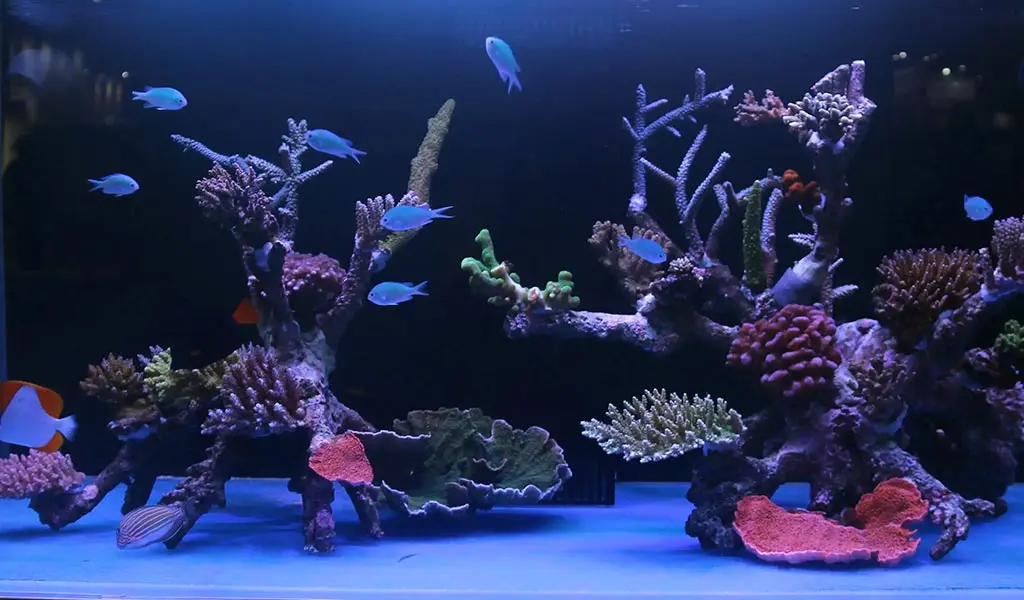
Characteristics of a reef tank
The characteristics of a reef tank differ from one species to another. The different types of aquatic life live in the same environment, and it’s important to ensure that each one gets along with the other. Having a large number of fish in one aquarium will not make for a balanced tank. Similarly, predatory species cannot migrate into a safer area in a closed system, so it’s important to choose a tank that will allow your fish to coexist peacefully.
The alkalinity of your tank is another essential feature. A reef tank should have alkalinity between 7 and 11 dKH. You must monitor it regularly to make sure that it’s not too acidic. It’s also important to keep the alkalinity levels consistent, as a sudden increase in alkalinity can be detrimental to your fish. It’s also important to keep in mind that salt is involved in marine environments.
Moreover, you should also pay close attention to the other parameters of the reef water. Certain species of fish may require special care. You’ll need to research their needs before selecting which species to keep. For example, some species have very specific water parameters that you must meet. However, if you’re not an expert, you can disregard magnesium and focus on the other nine parameters instead. A reef tank should be able to hold at least nine percent of its recommended magnesium levels.
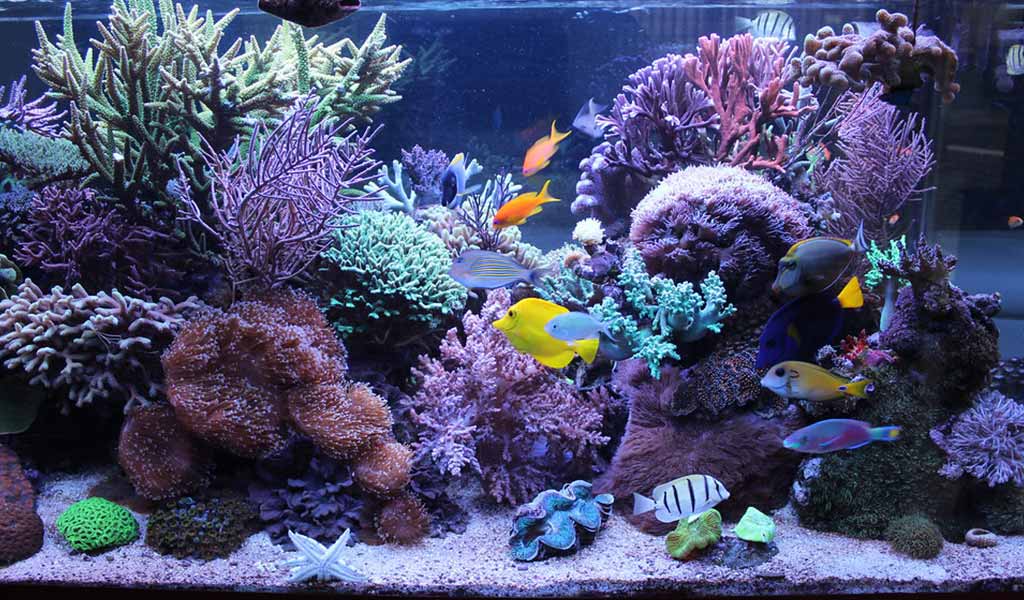
About reef tank parameters
To properly care for your marine aquarium, you need to monitor the critical parameters. These include temperature and pH levels. Other parameters to monitor include salinity and alkalinity. Calcium and magnesium are also important for reef tank inhabitants. You should also do water testing of parameters at least twice a week. If you notice a difference, make sure to adjust the water chemistry.
The right amount of trace elements is vital for healthy marine life. These elements make up around 0.7 percent of the total water in an aquarium. Keeping these elements at a balanced level will help keep your marine animals alive and beautiful. To maintain a healthy reef aquarium, you can perform regular water changes and add extra supplements to your system. For added protection, you should also use a protein skimmer.
There are two major causes of toxicity in the saltwater aquarium: nitrite and calcium. Both of these toxins affect the health of corals. A cycled aquarium reduces nitrogen waste by breaking down nutrients into nitrite and nitrate. In an uncycled aquarium, nitrate levels can cause problem algae to grow. Ideally, the nitrogen level in your aquarium should be between 380-420 ppm.
Nitrate levels need to be kept as low as possible. Most saltwater aquarium fish tolerate nitrate levels between 30 and 40 ppm. The fastest way to get rid of nitrates is to perform partial water changes. Using a dosing pump system is another easy way to reduce nitrate levels. However, you should do periodic water changes and monitor your aquarium bioload regularly.
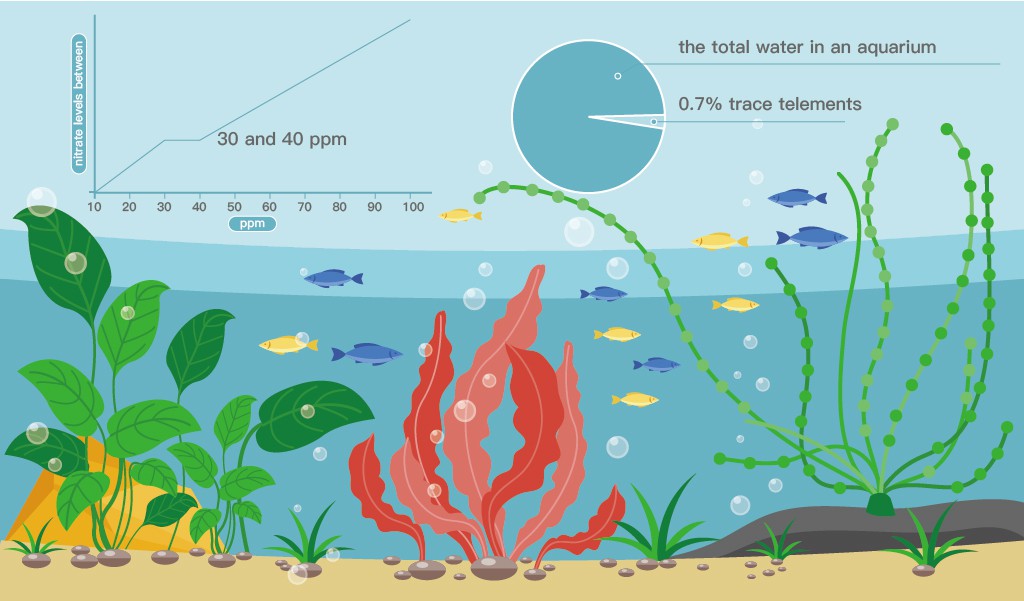
Alkalinity and pH levels should be checked weekly and twice a week when the tank is heavily stocked with coral. Checking the alkalinity level is essential as it can fluctuate throughout the day. Proper alkalinity levels prevent large changes in pH and calcium levels from becoming excessively high or low. This will reduce the chances of any stress on your fish. You should also test for magnesium and calcium levels regularly.
The temperature in the reef tank doesn’t have much to do with the level of chemicals in the water. However, maintaining a consistent temperature is essential for marine aquarium inhabitants. Excessively high or low water temperatures can cause stress for corals and result in disease outbreaks. To maintain the right temperature, use a high-quality submersible heater with a capacity of three to four watts per gallon of water. Use the correct temperature when performing water changes or top-offs.
In addition to maintaining the proper water quality, you need to consider several other factors. A good example of an extra-cost item you might need is a skimmer. A good skimmer will help in exporting wastes out of the tank an aquarium cleaner tool kit is a great choice for a 20-gallon aquarium cleaning.
How to build a 20-gallon reef tank
If you’re new to the hobby, you can try to build a 20-gallon reef tank.
First, choose the correct filtration system. Most all-in-one fish tank kits come with basic filtration systems. For external filtration, a double sponge filter S model is best for 20-gallon tanks.
The shape of your tank is also important. Many fish species prefer a particular level of the tank. A high-level tank will work best for mid-water fish, while a long-bottomed tank will be better for bottom dwellers. You’ll need to make sure your tank’s size and shape will be sufficient for the type of fish you plan on keeping. Choose the size of the filter accordingly, since larger filters have a larger footprint than smaller ones.
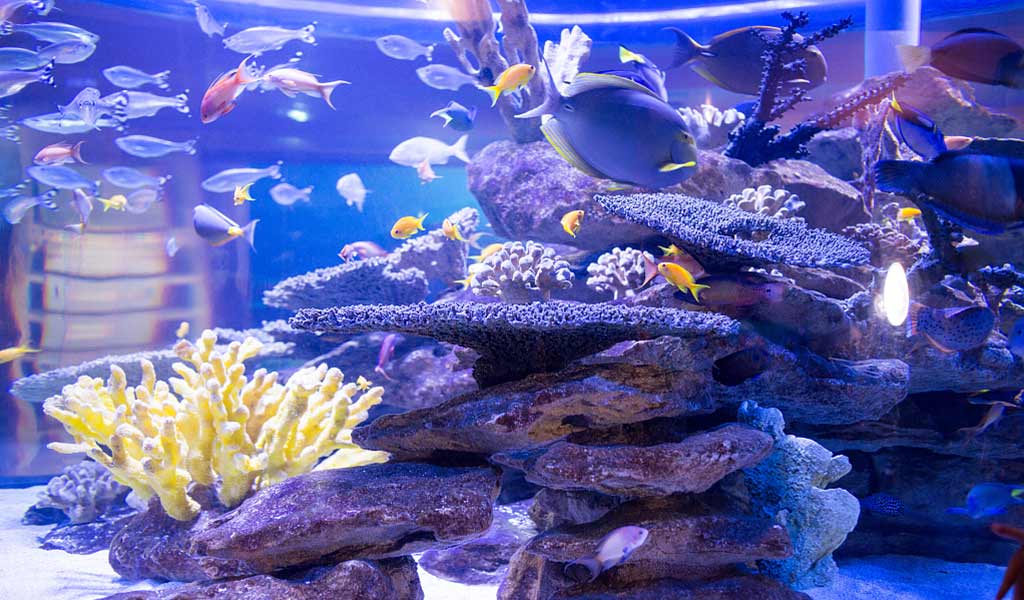
When choosing the species of fish, you should stick to smaller species. In general, tank-raised clownfish (Ocellaris or Percula Species), Red Firefish Goby, and Six Line Wrasse are good choices for a 20-gallon tank. If you’re interested in keeping nano reef fish, Betta Sonority is a great choice. You can also consider azure damsels, but they’re more aggressive than other types of fish.
The 20-gallon aquarium is an excellent starter tank, as it’s plenty big enough to house many species. Remember, however, to consider the types of fish you plan to keep, the filtration system, and the pH level of the water. The right size tank will keep your fish happy, but be sure to research the species to find out how many each species should be in an aquarium to ensure the best results.
Tips for 20-gallon reef tank routine maintenance
If you are looking for a few easy ways to keep your 20-gal reef tank clean and healthy, the following part covers routine maintenance for the most common issues. And remember that you’re not the only one who should take care of their tank! By following these routine maintenance tips, you can avoid problems and maximize your enjoyment of your new reef tank.
Water Changes – Changing the water in a reef tank is an essential part of maintaining it. Changing the water in a large tank can be a tedious task. Nano tanks don’t present the same challenges. You’ll want to change the water as often as possible, to keep your livestock healthy. You can do this by checking the water every day to make sure that it doesn’t get too stale. You must perform partial water changes at least once a month. These water changes should not be too drastic, but you should not exceed 20% of the volume of your tank.
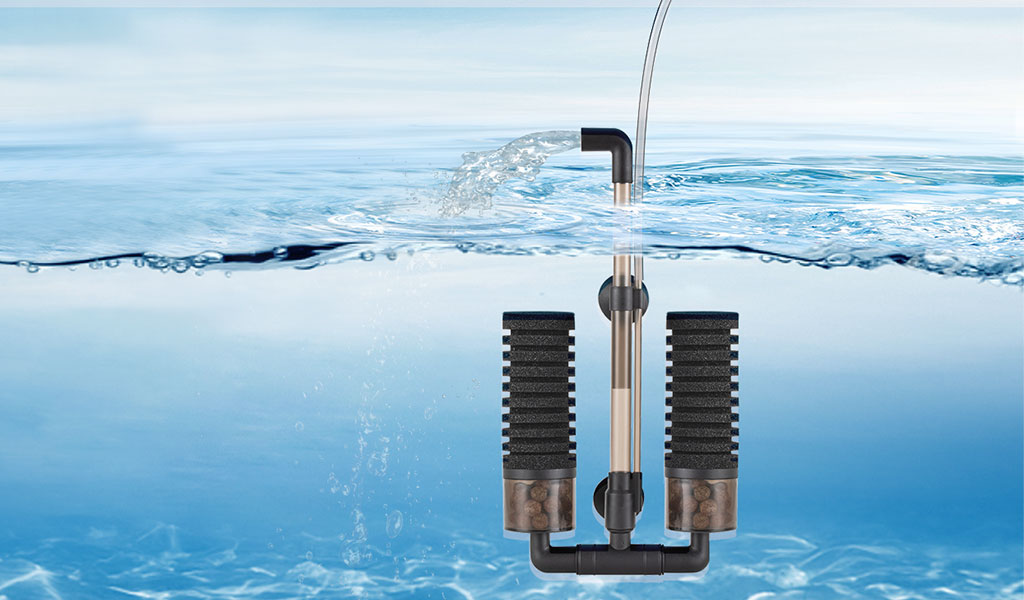
Regular Dosing – Regularly dosing base elements is a key part of routine maintenance for your reef tank. While soft corals don’t need dosing, other types of corals need this replenishment. A Dosing pump will help you maintain stable water chemistry in your aquarium and improve coral growth. Manual dosing, of course, will require daily dosing. Auto dosing can keep the tank balance as a piece of cake. Whether you choose to automate the process or follow a step-by-step routine, make sure you take the time to keep up with this essential task.
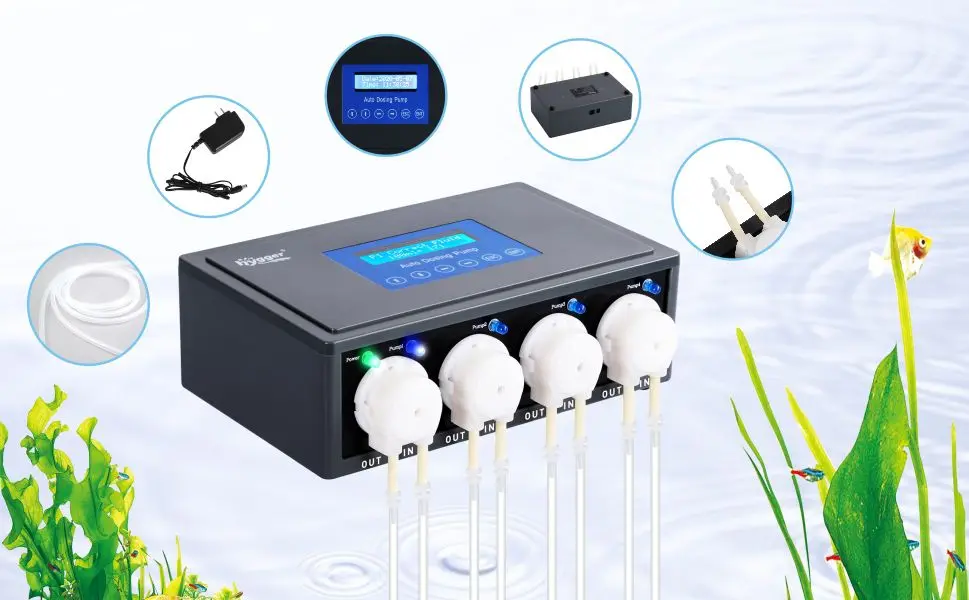
To better simulate the real natural environment, we need to provide the corals with the right light for them. A good blue lighting setup is an important part of the coral tank routine maintenance. Corals need specific spectrum and PAR levels to thrive. Corals can adapt to different light intensities, but if the coral receives a different spectrum, then it will appear in different colors.
A typical light system for keeping a coral tank should include a mix of effective light of about 50% white and 50% blue. This mix of light provides wavelengths that will bring out fluorescent colors that can make the aquarium look more natural.
Remember to purchase high-quality salt, which isn’t cheap but is worth the money. If you can’t afford this, check out a good salt mix specifically made for saltwater aquariums. Make sure to prepare your saltwater 24 hours ahead of time. Check the salinity of the saltwater and match the temperature with the water in the tank.
Alkalinity and pH levels should be checked at least once a week. Keeping these levels within the proper range is vital for the health of your fish. You’ll want to monitor these levels closely as they can go from zero to nearly zero in a matter of days. If these levels are too low, your fish won’t survive. And if you’re not testing these vital parameters regularly, you’re probably wasting your time and money.
Sum up
As part of your 20 G reef tank routine maintenance, it is important to clean all of the key equipment in the tank regularly. This includes the aquarium filter and protein skimmer. But don’t clean everything at once, because this can kill beneficial bacteria. If you want equipment to last longer and work better, you should clean it regularly.
